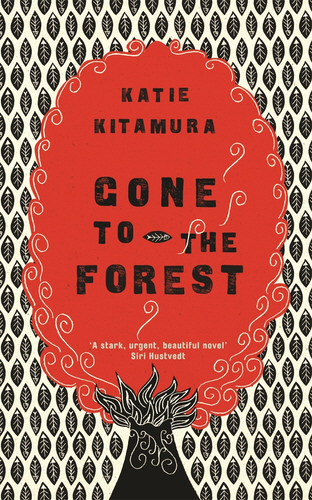The young white man is confused. Oddly, a radio has been taken out of the house and placed on the veranda. Perhaps it was one of the servants, he thinks. A voice booms from the speakers: ‘Brothers, our time has come. We are tired of being ground under the boot of the white oppressor.’
Four paragraphs in and Katie Kitamura’s Gone to the Forest has set out its stall: the house is unsettled and the colonial country is too. The private and the political are at one. Change is coming for all. This repressive environment is to be laid bare.
Kitamura’s second novel is set in an unnamed place at an unspecified time. The author says she stitched together this setting from a number of histories and cultures – in particular, those of Kenya and Zimbabwe. But it is Coetzee’s vision of South Africa that will likely first come to mind for any reader of post-colonial fiction. And that’s not just because of the subject matter, it’s also for the sparse prose and assured storytelling. This is an impressive read – one that marks out Kitamura as a major talent.
The family drama revolves around Tom and his controlling father, who decades ago marked out his land and made his fortune. Tom’s mother is 10 years dead. A mysterious woman now enters their straitened, masculine home and a love triangle ensues. Kitamura, riskily, withholds much more about these three characters than she gives out. It is left to us to piece together our own understanding of each – we perhaps never get to know any of them. This enigmatic quality is at the heart of the novel.

by Katie Kitamura
195pp, The Clerkenwell Press, £10.99
The old man (as he’s described throughout) is ‘essentially a violent man’, a man who ‘does not recognize fear as a valid emotion’. Smart, taciturn, with seemingly little love for his son, he is a powerful figure on both his farm and in the story. But he, and what he knows, is changing, and in ways that are out of his control.
The dim-witted and innocent Tom is an almost entirely passive character – arguably too passive and arguably unbelievably so. He watches, seemingly untouched, as his bride-to-be and father take up together. The building threat of violence from ‘the natives’ also largely passes him by. Kitamura dares to give us a blank canvas for a lead.
The young woman, Carine (but, again, rarely named), is the novel’s most intriguing character. She arrives at the farm after being sent to live with relatives at a nearby house after some undisclosed scandal. She drifts in and around the story – at times, almost ghost-like. We grasp to understand her story as if it holds the key to the book – in a similar way to how the house servants are little explored but always ‘there’, knowing. Carine suffers a rape – that act of heinous brutality resulting from heinous inequality that is often seen in post-colonial literature. Carine is powerless in a place where power is distributed so unfairly. She is a kindred spirit of Antoinette Cosway from Wide Sargasso Sea.
The narration does occasionally, tantalisingly, give us the thoughts of Carine. This is one of the quirks – first year writing school errors, you might say – of Kitamura’s book. The narration, at times, is able to venture into people’s minds, but, mostly, characters’ thoughts remain out of reach. The tense switches between past and present. The patchwork of colonial histories throws up a number of inconsistencies and anachronisms. And an erupting volcano resulting in ash-filled rivers and dead fish brings a near-surreal element to part of the story.
Without doubt, Kitamura has put in these tricks and oddities with her eyes wide-open. It is a sign of her control that she almost-entirely pulls them off. However, the mysteriousness of the book, while largely a quality, can irritate. At times, the nature of people’s characters and, certainly, the story of ‘the natives’ and their rebellion could be brought into sharper focus (although the ending does neatly place front-centre one of the book’s background characters). The book’s language can come across as a little too affected – in particular, the repetition of certain words and the use of fragments is jarring to start. The parallels between the volatile personal, political and environmental situations are a little overplayed.
However, these are minor quibbles of a book of this ambition. Katie Kitamura’s Gone to the Forest is not quite fully-realised, but it is, without doubt, a mighty success. And what excites most of all is that we can expect even more of Kitamura next time around.










